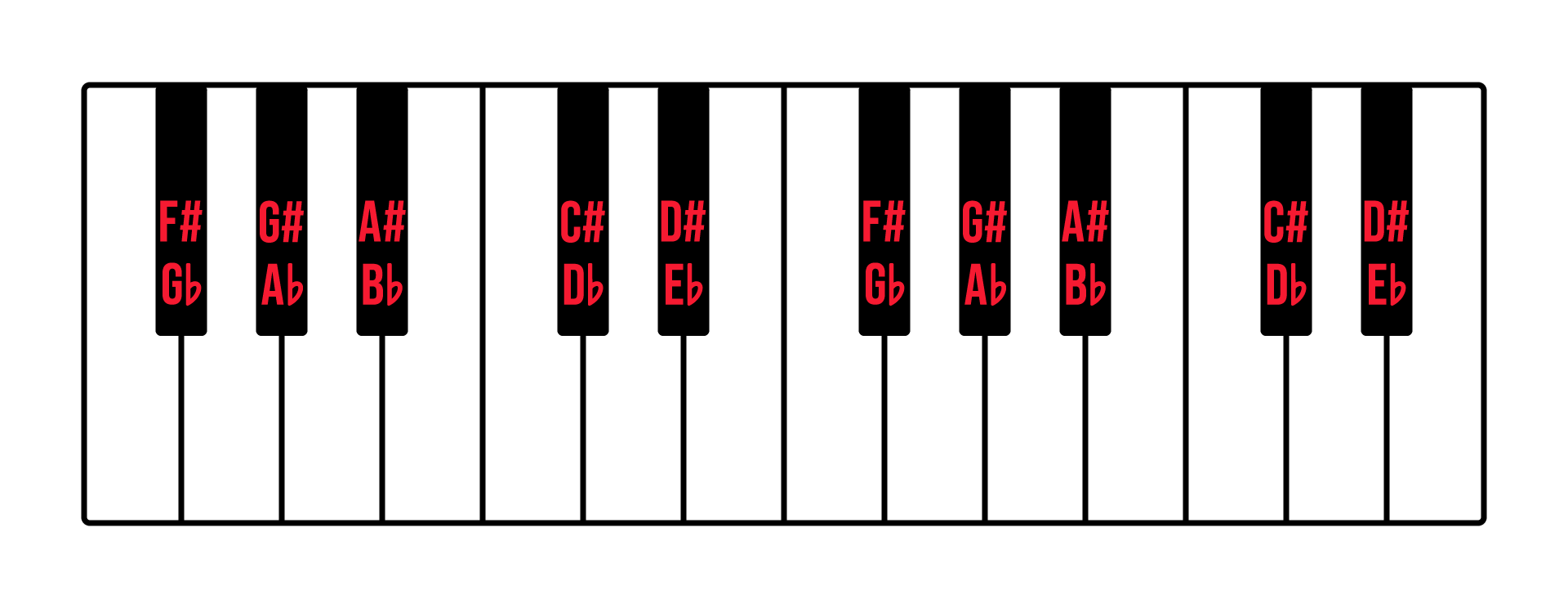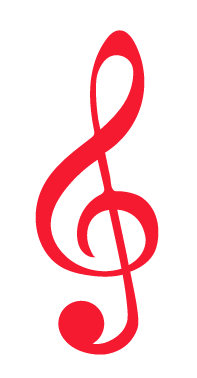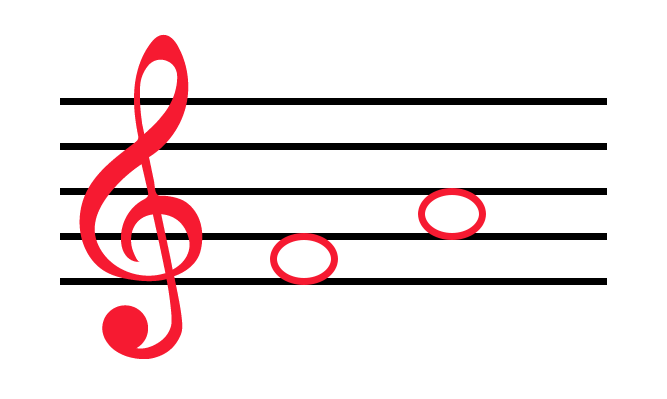One of our most popular YouTube videos of all time is “How to Read Notes.” Which means lots of people want to learn how to read piano notes!
Knowing how to read sheet music is an extremely useful skill. It’s like knowing another language. If you know how to read music, as long as you have the necessary sheet music, you can play whatever you want!
But learning how to read music can be intimidating for beginners. Which is why we’ve put together this easy-to-understand article on how to master reading music for good.
Table of Contents:
Part 1: How to Read Piano Notes
Part 2: Read Piano Notes Faster
If you prefer to watch a video, take a look at “How to Read Notes” Part 1 and Part 2. And if you prefer a more hands-on approach, check out our free course Sight Reading Made Simple.
Get exclusive interviews, fascinating articles, and inspiring lessons delivered straight to your inbox. Unsubscribe at any time.
The first thing you need to know is that each note has a name and that notes are ordered like the English alphabet. We name notes from A to G and then repeat from A again. These are the names of all the white keys:

The black keys have names too. Actually, there are two possible names for them, but don’t worry too much about the black keys for now—focus on the white keys first. (The “♯” symbol means “sharp” and the “♭” symbol means “flat.”)

So, there are 12 notes on a piano:
These 12 notes just repeat over and over again on the keyboard.
If you’re new to the piano, here is a quick way to remember where notes are:

Next, let’s get to know the treble clef and the bass clef.

First, let’s look at the beautiful swirl that is the treble clef, which is also called the G-clef. Usually (but not always!), seeing a treble clef means you play that section of music with your right hand. Treble clefs organize high notes (treble = high voice).

Next, let’s look at the bass clef, which looks like half a heart with two dots. Usually (but not always!), seeing a bass clef means you play that section of music with your left hand. Bass clefs are associated with low notes (bass = low voice).
The treble and bass clef sit on five lines with spaces between them. The five lines are called a staff.


In piano music, the treble and bass clef are joined together by a brace. This is called the grand staff:

These lines and spaces are where our notes will sit. Notes that sit on higher lines and spaces are higher pitched than notes that sit on lower lines and spaces.

Going from a line to a space is a “step,” while going from line to line or space to space is a “skip.” Here are how the notes from the keyboard we saw above correspond to notes on lines and spaces:

The first note most piano students learn to read is Middle C. Middle C sits between the treble and bass clefs. It has a line through it—this is called a ledger line. Ledger lines anchor notes that sit outside the five lines of the staff.



If you struggle with reading music, you’re not alone! Did you know you can play hundreds of songs without standard notation? We’ll show you the secrets traditional lessons won’t teach in a 100% free webinar. It’s open to all ages and ability levels. Just show up and have fun!
Two things tell you how many beats a note should be played for: the time signature and the note value.
Let’s focus on note values first. The “biggest” note is the whole note. One whole note can be divided into two half notes, and one half note divides into two quarter notes. We can keep dividing notes like this:

Eighth notes and sixteenth notes have flags that can be joined together. This groups the notes to make reading them easier:
Eighth Notes

16th Notes

If you’ve taken music lessons before, you may have learned that whole notes are worth four beats and quarter notes are worth one. This isn’t always true because how many beats a note is worth depends on the time signature.
The time signature is located at the beginning of music right after the clef. The top number tells you how many beats will be in each measure (measure = a unit of music separated by bar lines). The bottom number tells you what type of note is worth 1 beat.
As a beginner, you’ll encounter common time or 4/4 most often. In common time, each measure has four beats and a quarter note is worth 1 beat.

Want another example? Take cut time or 2/2. In cut time, each measure has two beats and a half note is worth 1 beat. Therefore, to count quarter notes, we divvy up the beats and use “and” or a plus sign to count them.

You can learn more about cut time here.
As a Pianote+ Member, you’ll get access to our 10-step Method, 1000+ song library, real teachers, world-class Coaches, and a growing community of piano players just like you.
Now that you know how sheet music works, you may be wondering how to read piano notes efficiently and effectively. The simple answer is “practice,” but there are some tricks you can use to speed up the learning process.
Mnemonic devices can help you memorize the names of the notes that sit on lines and spaces. Use these popular acronyms to memorize the names of notes by using the first letter of each word.
Treble Clef Space Notes 👁️👄👁️

Bass Clef Space Notes 🐮

Treble Clef Line Notes 😋

Bass Clef Line Notes 🤤

Hungry? Grab some fudge 🍫 and read on to learn about landmark notes…
Another way to read music more efficiently is to memorize some landmark notes. These are notes you know very, very well. And you can then think of other notes in relation to these notes.
Some good landmark notes on the treble clef are G and high C. You can think of other notes as steps and skips away from these notes:

A good landmark note for the bass clef is F.

Here’s a secret: you don’t have to read each and every single note on a sheet of music. As you get better at reading music, you’ll notice patterns that speed up the reading process.
This is like learning how to read. We first learn how to read by sounding out letters, one at a time. Eventually, we learn to recognize words. For example, when you see the word “cat,” you don’t read each letter (c-a-t) because you can recognize the word “cat” instantaneously.
“Words” exist in sheet music too! Here are some “words” to know:
An interval is the space between two notes. Intervals are an awesome tool to train your ear, but they can help you read music too.
A good interval to learn how to recognize is the third. If you see a line-note moving to the next line-note, or a space-note moving to the next space-note, that’s a third.


When you see a third, you just need to recognize one of the notes. The other note is a skip away.
Another good interval to learn is the fourth. A line-note moving to a space-note or a space-note moving to a line-note like this is a fourth:

Music is made up of patterns. Learning how to recognize patterns that crop up again and again can help you make sense of sheet music faster.
For example, take scales. If you see a row of notes separated by steps (line to space to line to space etc.), you’re probably seeing a scale. You only need to know the first note of the pattern; everything else is just a step up or down!

As you get more experienced with music, you’ll learn to recognize other recurring patterns. Such as the Alberti bass:

Note: if you’re new to chords and this section feels too advanced for you, check out How to Play Piano Chords: Triads, 7ths, Extensions & More.
Chords are the building blocks to everything in music, from classical to jazz to pop and everything in between. A chord is several notes played together at once.
Chords are an important part of harmony, but they can be intimidating for beginners to identify. It’s easy to feel overwhelmed when you see something like this:

Whew…that’s a lot of notes! Let’s take a deep breath and break things down.
A chord you can easily recognize like a word is a root position triad. With three notes stacked neatly on top of each other, root position triads like a snowman. When you see a chord like this, you only really need to identify the lowest note on the bottom. The two other notes are just skips above.
Here are three root position triads: C Major, E Major, and F Major ⛄

Once you’re more familiar with chords, you’ll notice that inversions of chords look similar. You can then learn to identify first, second, third etc. inversion chords right away.
Triads in First Inversion

Triads in Second Inversion

We hope you found this quick guide to reading piano notes helpful!
Ready for the next step? Check out How to Get FASTER at Sight Reading Piano.
Get real feedback from real experts…all from the comfort of your own home. Explore our Method and community for yourself with a free trial.
Charmaine Li is a Vancouver writer who has played piano for over 20 years. She holds an Associate diploma (ARCT) from the Royal Conservatory of Music and loves writing about the ways in which music—and music learning—affects the human experience. Charmaine manages The Note. Learn more about Charmaine here.


By signing up you’ll also receive our ongoing free lessons and special offers. Don’t worry, we value your privacy and you can unsubscribe at any time.
We use cookies for traffic data and advertising. Cookie Policy »